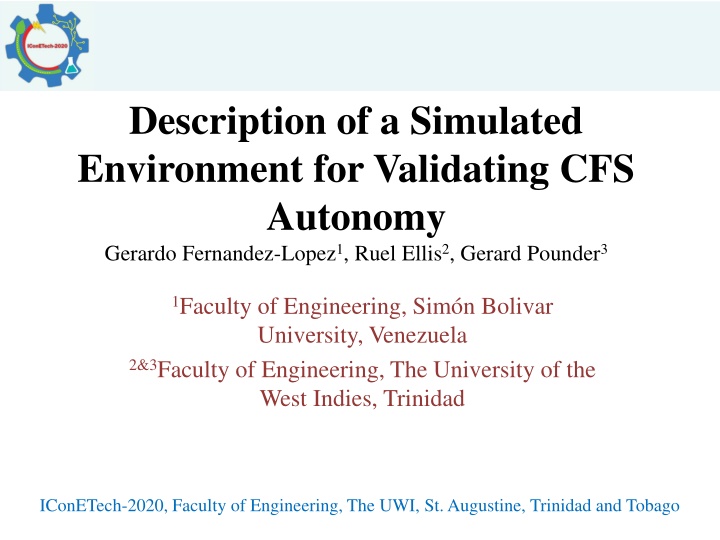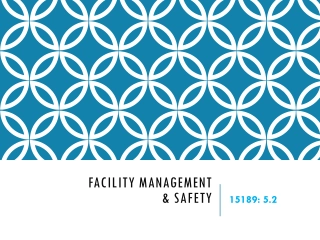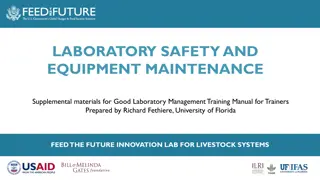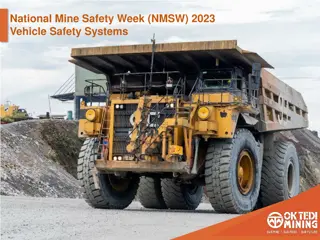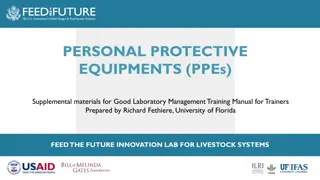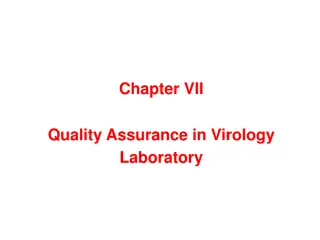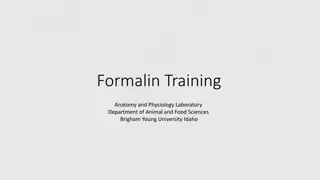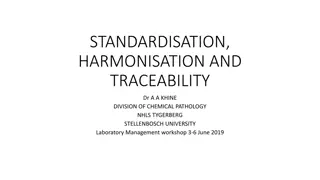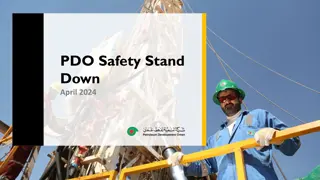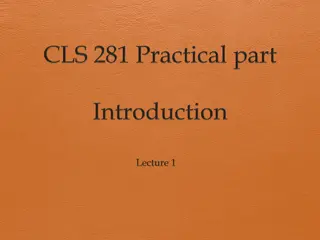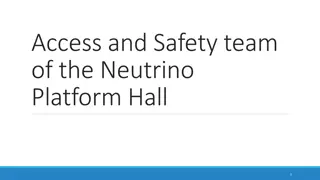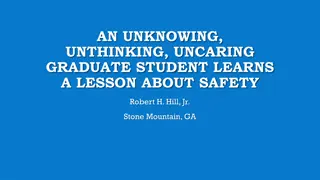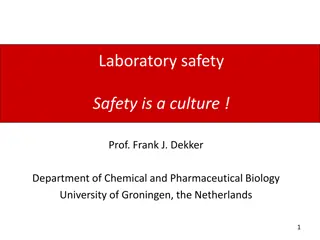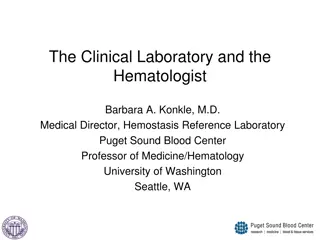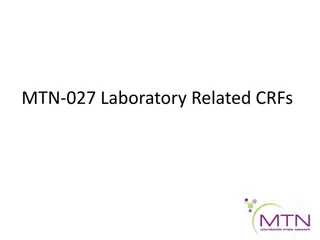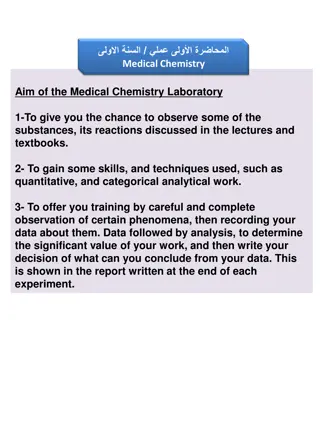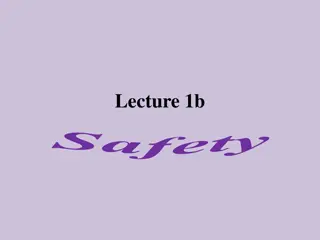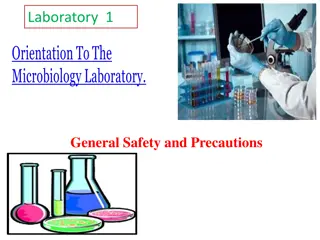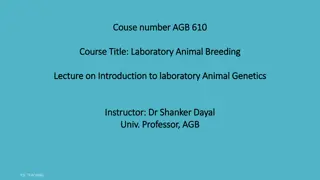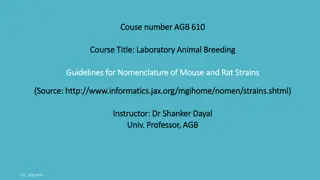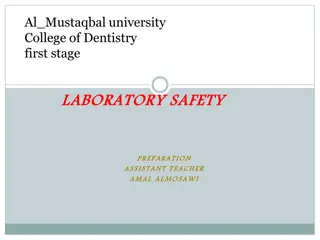Laboratory Safety Guidelines for Students
Laboratory safety is paramount in any scientific setting. This comprehensive guide covers general safety rules, glassware safety precautions, and essential practices to ensure a safe laboratory environment. From wearing safety goggles to proper glassware handling, these guidelines are crucial for student safety in labs.
Download Presentation

Please find below an Image/Link to download the presentation.
The content on the website is provided AS IS for your information and personal use only. It may not be sold, licensed, or shared on other websites without obtaining consent from the author.If you encounter any issues during the download, it is possible that the publisher has removed the file from their server.
You are allowed to download the files provided on this website for personal or commercial use, subject to the condition that they are used lawfully. All files are the property of their respective owners.
The content on the website is provided AS IS for your information and personal use only. It may not be sold, licensed, or shared on other websites without obtaining consent from the author.
E N D
Presentation Transcript
Description of a Simulated Environment for Validating CFS Autonomy Gerardo Fernandez-Lopez1, Ruel Ellis2, Gerard Pounder3 1Faculty of Engineering, Sim n Bolivar University, Venezuela 2&3Faculty of Engineering, The University of the West Indies, Trinidad IConETech-2020, Faculty of Engineering, The UWI, St. Augustine, Trinidad and Tobago
CONTENTS Introduction Objectives Methodology Literature Review Design and Implementation of Simulated Environment Results References IConETech-2020, Faculty of Engineering, The UWI, St. Augustine, Trinidad and Tobago
INTRODUCTION According to Kattan et al. (2010) problem decomposition: simplifies complex real world problems to better cope with them; requires a good understanding of the problem domain. Kattan et al. (2010) observe that: the wrong decomposition may actually increase the problem s complexity. IConETech-2020, Faculty of Engineering, The UWI, St. Augustine, Trinidad and Tobago
INTRODUCTION Scientific community decomposed the properties of Intelligence giving rise to: Symbolic Artificial Intelligence, or AI, Architectures; Sub-Symbolic, or Reactive, AI Architectures; and Hybrid AI Architectures (and Behaviour-Based Robots). IConETech-2020, Faculty of Engineering, The UWI, St. Augustine, Trinidad and Tobago
INTRODUCTION Applying the Questioning Technique used in Industrial Engineering Work Study we ask: Is this the only/best way to decompose Intelligence ? Suppose Intelligence components are not well suited for independent modules in Multi-Agent Systems or MAS ? Suppose Intelligence components are better served being fit together prior to implementation for it to function effectively, akin to a car motor ? IConETech-2020, Faculty of Engineering, The UWI, St. Augustine, Trinidad and Tobago
INTRODUCTION (Arkin, 1986; Gat, 1998; Nilsson 2007; Vernon et al., 2007) GENERAL STRUCTURE OF HYBRID AI ARCHITECTURE Symbolic / Deliberative Layer Intentionality Imagination Consciousness Interface / Sequencing Layer REQUIRED FOR REAL TIME PERFORMANCE (Leahu et al. 2008) Sub-Symbolic / Reactive Layer Emotions Autonomy IConETech-2020, Faculty of Engineering, The UWI, St. Augustine, Trinidad and Tobago
INTRODUCTION (Arkin, 1986; Gat, 1998; Nilsson 2007; Vernon et al., 2007) GENERAL STRUCTURE OF HYBRID AI ARCHITECTURE COGNITIVE Symbolic / Deliberative Layer Intentionality Intentionality Imagination Consciousness Consciousness Consciousness FUNCTION Interface / Sequencing Layer Imagination Consciousness Emotions Autonomy SYNTHESIS REQUIRED FOR REAL TIME PERFORMANCE (Leahu et al. 2008) Sub-Symbolic / Reactive Layer Emotions Autonomy Autonomy IConETech-2020, Faculty of Engineering, The UWI, St. Augustine, Trinidad and Tobago
INTRODUCTION Anticipation ANTI- CIPATE IMAGE ANTI- CIPATE STATE ANTI- CIPATE ACTION MEMORY SEQUENCES MEMORY SEQUENCES MEMORY SEQUENCES RECALL PRESENT IMAGE RECALL PRESENT STATE RECALL PRESENT ACTION Memory Autonomous Extraction SEPARATED IMAGE CHANGES IN STATE MOTOR COMMANDS EXTRACTION EXTRACTION EXTRACTION INTERNAL STATES SENSOR DATA REFLEXES IConETech-2020, Faculty of Engineering, The UWI, St. Augustine, Trinidad and Tobago 8
INTRODUCTION CFS Perceptual Learning, Consciousness and Imagination was demonstrated in recent publication (Pounder et al., 2017); CFS Autonomy and Emotion still need to be validated. IConETech-2020, Faculty of Engineering, The UWI, St. Augustine, Trinidad and Tobago
INTRODUCTION TO VALIDATE CFS AUTONOMY: A suitable environment for analysing CFS navigation autonomy, and observe its emergent behaviour needs to be developed; The environment should comprise a robot platform that is able to operate autonomously when preconfigured with only basic reflexes; The environment would then need to be validated; Results from other algorithms need to be identified for use as CFS benchmark metrics; Only then can CFS performance be validated; IConETech-2020, Faculty of Engineering, The UWI, St. Augustine, Trinidad and Tobago
INTRODUCTION This presentation describes the environment that was developed for analysing CFS navigation autonomy. IConETech-2020, Faculty of Engineering, The UWI, St. Augustine, Trinidad and Tobago
OBJECTIVES To develop a suitable environment for analysing CFS navigation autonomy, and to observe its emergent behaviour: The environment should comprise a robot platform that is able to operate autonomously when preconfigured with only basic reflexes; Navigation algorithms ought to be superimposed over the preconfigured robot to enable performance comparison; Present results from initial experiments. Scope limited principally to Autonomous Navigation IConETech-2020, Faculty of Engineering, The UWI, St. Augustine, Trinidad and Tobago
METHODOLOGY Review existing platforms referenced in the literature to identify a suitable robot. Select an appropriate robot simulator for environment design. Design and implement the environment. Present initial results. IConETech-2020, Faculty of Engineering, The UWI, St. Augustine, Trinidad and Tobago
LITERATURE REVIEW Surveys by: Hilal, Wagdy and Khamis (2007); Mondada, Bonani, Raemy (2009); Ruzzenente, Koo, Nielsen (2012); and Junior, Neto, Hernandez (2013) identified the following candidate platforms: ioneer o ot y Adept o ilero ots tingray o ot hepera and emisson y Team indstorm oom a reate y i o ot ia ot ro ots y erlin ystems ischerTechnik ovio y o ee Qfi o otino y esto uck y cole olytechnique d rale de ausanne Gyebi, Hanheide and Cielniak (2015) and Takacs, Eigner, Kov cs (2016), identified additional robot platforms for use as educational tools for Science, Technology, Engineering and Mathematics support, or STEM. The Pioneer robot was chosen as the platform for experiments in these simulated environment. IConETech-2020, Faculty of Engineering, The UWI, St. Augustine, Trinidad and Tobago
LITERATURE REVIEW The Microsoft Robotics Developer Studio 4 and the V-REP 3.3.2 (rev 3) simulation packages were considered. V-REP was chosen and installed on a Lenovo P50 64-bit laptop with an Intel Core i7-6820HQ, and a 2.7 GHz processor with 32GB RAM. Code written in C++ with Microsoft Visual Studio 10 was used to run the simulator. The robot simulator was configured to resemble, as much as possible, the environment described in experiments conducted with Darwin VII (Krichmar and Snook, 2002). IConETech-2020, Faculty of Engineering, The UWI, St. Augustine, Trinidad and Tobago
DESIGN AND IMPLEMENTATION OF THE SIMULATED ENVIRONMENT a) b) a) b) c) PhantomX Pincher manipulator (left) with Pioneer 3DX mobile robot platform (right); PhantomX Pincher fitted to Pioneer 3DX mobile robot platform with vision sensors; Composite Robot Platform In Simulated Environment. Vision Sensor and Ultrasound Sensors used in Braitenberg sense to achieve Biomimetic reflexes. IConETech-2020, Faculty of Engineering, The UWI, St. Augustine, Trinidad and Tobago
DESIGN AND IMPLEMENTATION OF THE SIMULATED ENVIRONMENT State Diagram for Robot IConETech-2020, Faculty of Engineering, The UWI, St. Augustine, Trinidad and Tobago
RESULTS IConETech-2020, Faculty of Engineering, The UWI, St. Augustine, Trinidad and Tobago
REFERENCES Kattan, A., A. Agapitos, and R. Poli. 2010. Unsupervised Problem Decomposition Using Genetic rogramming. In Genetic Programming, edited by A. Esparcia-Alc zar, Springer Berlin Heidelberg. Arkin, . . 1986. ath lanning for a ision- ased Autonomous o ot. n onference on o ile o ots. Cambridge, MA. Gat, E. 1998. n three-layer architectures. n Artificial Intelligence and Mobile Robots: Case Studies of Successful Robot Systems, edited by D. Kortenkamp, R.P. Bonasso, and R. Murphy, Editors. AAAI Press: Menlo Park, California. Vernon, D., G. Metta, and G. Sandini. 2007. A Survey Of Artificial Cognitive Systems: Implications For The Autonomous Development Of Mental Capabilities In Computational Agents . volutionary Computation, IEEE Transactions On. IEEE. Pounder, G.A.J., R.L.A. Ellis, and G. Fernandez- opez. 2017. ognitive Function Synthesis: Preliminary Results. Kybernetes 46(2): 272-290. Hilal, A.R., K.M. Wagdy, and A.M. Khamis. 2007. A Survey on Commercial Starter Kits for Building Real Robots. n Proceedings of the International Conference on Electrical Engineering. German University in Cairo, Egypt. Mondada, F., et al. 2009. The e-puck, a robot designed for education in engineering. n Proceedings of the 9th conference on autonomous robot systems and competitions. Ruzzenente, M., et al. 2012. A review of robotics kits for tertiary education. n Proceedings of International Workshop Teaching Robotics Teaching with Robotics: Integrating Robotics in School Curriculum. Junior, L.A., et al., 201 . A Low-Cost and Simple Arduino-Based Educational Robotics Kit. Journal of Selected Areas in Robotics and Control (JSRC) 3(12): 1-7. Gyebi, E., M. Hanheide, and G. Cielniak. 2015. Afforda le mobile robotic platforms for teaching computer science at African universities. n Proceedings on the 6th International Conference on Robotics in Education. Cheseaux- Nor az, Switzerland. Takacs, A., et al., 2016. Teacher's Kit: Development, Usability, and Communities of Modular Robotic Kits for Classroom Education. IEEE Robotics & Automation Magazine 23(2): 30-39. Krichmar, J.L. and J.A. Snook. 2002. A neural approach to adaptive behavior and multi-sensor action selection in a mobile device. n Robotics and Automation, Proceedings. ICRA'02. IEEE International Conference on. IEEE. IConETech-2020, Faculty of Engineering, The UWI, St. Augustine, Trinidad and Tobago
THANK YOU! IConETech-2020, Faculty of Engineering, The UWI, St. Augustine, Trinidad and Tobago
